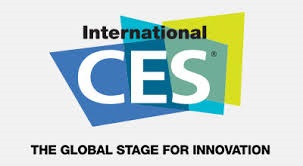How Did the New CES C-Space Work Out? - Brad Kayton, GM, 1World Online

While I work in the digital media sector now, I've spent most of my career in consumer electronics and have attended the Consumer Electronics Show (CES) for the past 17 years. All those in the advertising and marketing business who were at CES this year most likely visited the new C Space ("C" is for Content) at the Aria Convention Center. From my CE perspective, it offered a new opportunity to concentrate the growing audience of media, advertising and marketing executives in one place. CES spilled-out well beyond the walls of the Las Vegas convention space this year as it was spread out into three main areas around town, C Space being one of the three. Free busses were easy to catch to shuttle yourself to the various venues.
The Consumer Electronics Association (CEA) created Eureka Park at the Venetian Convention Center for start-ups (and universities) a few years ago, and this year centralized The Internet of Things (which was actually everywhere at CES) at The Sands. It has been challenging for content and media companies to have meaningful presence at CES, although their importance in the ecosystem has been growing. Thus was born C Space.
CEA defined C Space as "the destination for creative communicators, brand advertisers, digital publishers, and social networks." They billed the venue as a place where content, creativity, and technology would come together. They recruited content companies, brand marketers, agencies, and advertising technology companies (never calling it AdTech, interestingly). They provided a ballroom space where exhibitors had some booths, but most of the firms participating simply hosted hospitality suites in the Aria Hotel, where several of the leading media agencies also hosted suites where they and their clients could centralize meetings with media and tech vendors. (Editor's note: It all leads to the question whether marketers and media executives spent more time on the convention floor than the requisite 90-minute pre-organized tour? ) About 30 companies in total participated with suites or as exhibitors at C Space this inaugural year.
The ballroom of exhibitors was quaint; only eight vendors or media firms were in the room. The only two widely recognizable companies were NBC Universal and Taboola, and high level executives were present occasionally, more so in the booths of the lesser known companies. While only eight vendors in a cluster seems "rinky-dink" compared to the 3,500 exhibitors overall at CES, it made for a manageable tour of the public exhibit space. I spoke at length with five of the eight exhibitors and all of them, to a person, were happy with both the quantity and quality of their booth traffic. Dan Partelow, Taboola's manager of brands and agencies, working in the Taboola booth said that he didn't necessarily have a stream of new clients coming out of their presence at the show, but he was positive and said he'd attend again and pointed to "lots of business development partnering opportunities, good people networking, and new considerations strategically" for the company as a net-result of their decision to exhibit this year.
If there was one theme of this small exhibitor area it was Interactive TV. My personal favorite of the exhibitors, new to me, was Samba TV; Samba has embedded firmware in most of the chip sets for newer television sets and can provide real-time TV audience analytics, similar to Nielsen but in real-time, more accurate, and more detailed.
C Space had two conference seminar/speaking tracks, one for "Marketing and Engagement" and one for "Digital Disruption." A quick sampling of these sessions include "TV Data and Measurement Unplugged," "Reaching the Next Gen Consumer on TV and Video," "Amplifying Content with Earned Reach," and "Eradicating Fraud/Maximizing Digital Spend." A few companies hosted sessions addressing the audience on their view of the world, including Google, Twitter, iHeartMedia, Yahoo, and Havas Worldwide. I sat through some of the sessions and found them quite good and often illuminating (compared to many media conferences where you leave realizing you have not learned one new thing).
The hospitality suites were all private affairs not open to those wanting to drop in to meet and greet. Amazon, Better Home & Gardens, Hulu, The Rubicon Project, and USA Today/Gannett were among the suite hosts, along with some agencies. Shelly Palmer had a strong presence again this year, hosting his popular tours and invitation-only breakfast and dinners. Shelly also was a presence with an ad campaign in Las Vegas taxi cabs.
Overall, the C Space was a very good networking and learning venue – but better for company execs with pre-set meetings in the suites. Media companies focused on content and interactive TV were clearly the focus of the public space. But there are many better shows and conferences for AdTech and I expect agency and brand marketers may have been disappointed with C Space, as it didn't offer too much for these audiences, even though the conference topics and players present were respectable.
In 2016, CEA will improve and likely amplify C Space, so it will be important to see how this new show venue expands and what it shapes up to be. For what it is worth, I will be there again.
Brad Kayton is GM of 1World Online; 1World helps publishers and brands better engage and understand their digital audiences. brad@1worldonline.com


